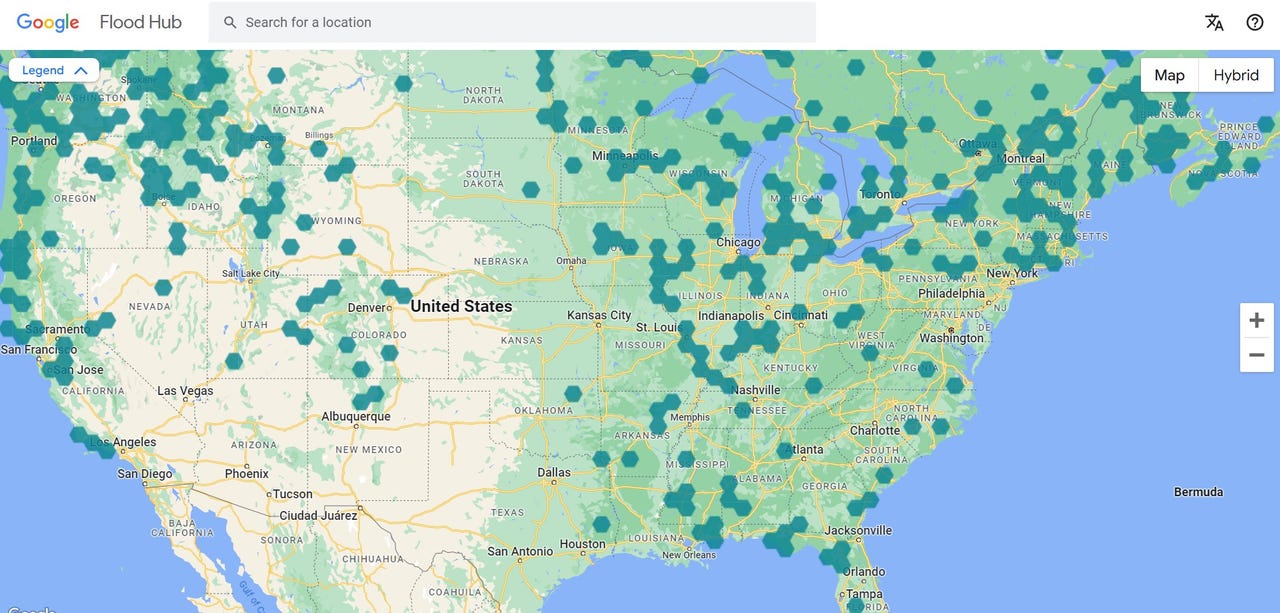Google is using AI to predict where floods will happen, even with little data. Here's how


For six years now, Google has offered Flood Hub, a tool that predicts which local areas are at risk of flooding in the next week. Using publicly available data, the tool forecasts where floods are likely to happen and sends out warnings to local governments and humanitarian organizations.
Flood Hub covers over 80 countries, including the US, and provides forecasting to over 2,000 sites where more than 460 million people live. Warnings are available via Google Search, Google Maps, and Android notifications. Now, Google is offering insight into how Flood Hub is getting even better.
Also: Google enhances its AI-powered flood and wildfire tracking systems
The company's work in flood prediction began in Patna, one of the most flood-prone regions of India. Google fed historical events, river level readings, and terrain and elevation information into a forecasting model, ran thousands of simulations, and generated flood maps.
In 2019, Google added a dozen coverage areas and sent out more than 800,000 alerts. At the same time, the company began working with academic researchers to combine flood simulations and AI tools. The program saw some success, but was limited to areas that had data on local streamflow.
Thanks to advances in AI, Flood Hub can now not only predict floods more accurately, but make predictions in areas where streamflow measurements aren't available. Access to flood forecasting in Africa, Google says, is now right in line with what's available in Europe.
Google aims to increase life-saving flood prediction coverage to other areas, while adding forecasting of other types of flood-related events like flash floods and urban floods. With AI-driven advancements in flood forecasting, Google says the company has the ability to significantly reduce the impacts of flood events, potentially saving countless lives.
Google is also using AI to help address other climate challenges. Google is working with organizations like the World Meteorological Organization (WMO) to develop systems like Early Warnings for All, which hopes to provide climate hazard warnings to everyone in the world by 2027.